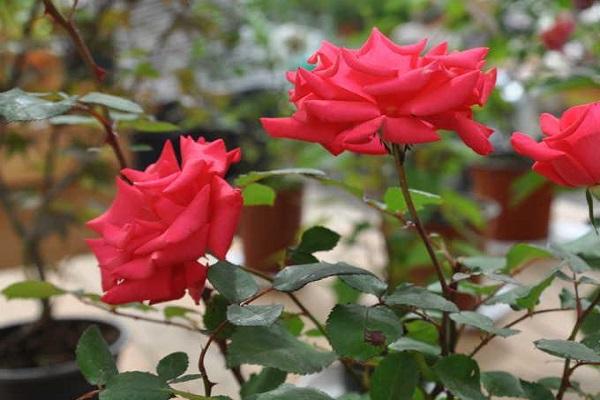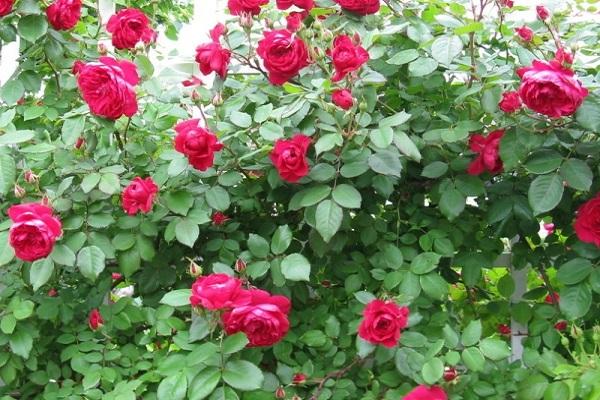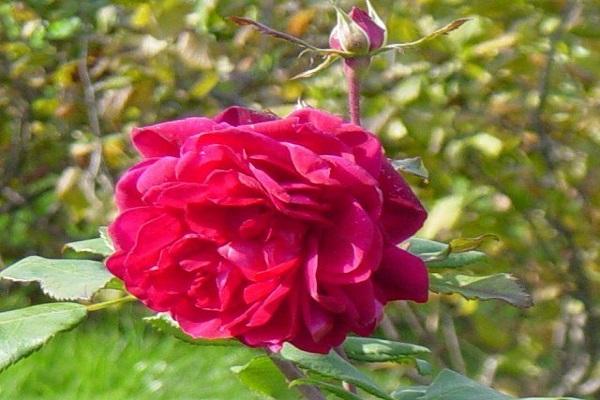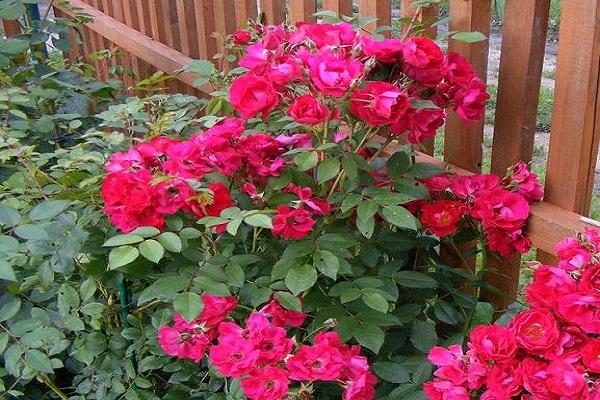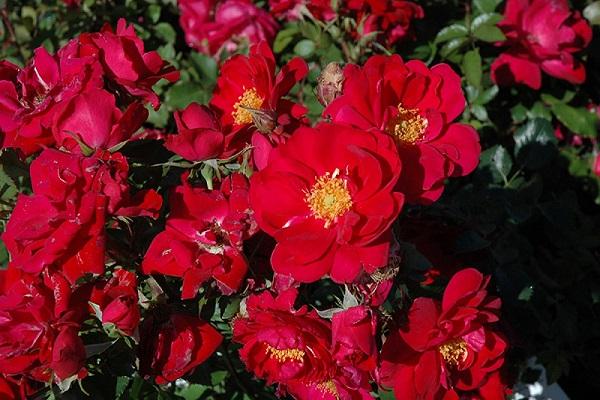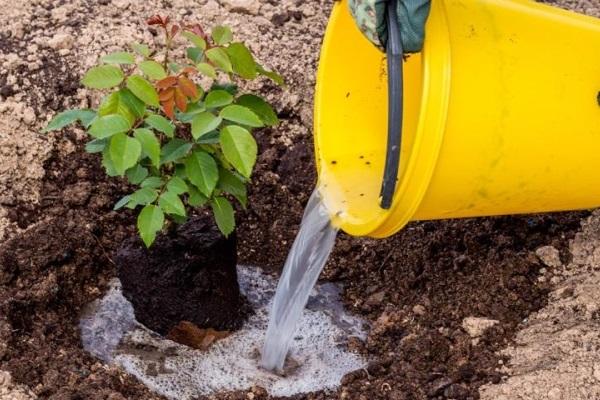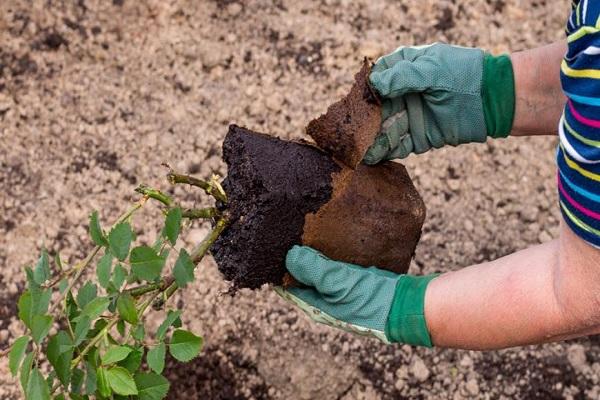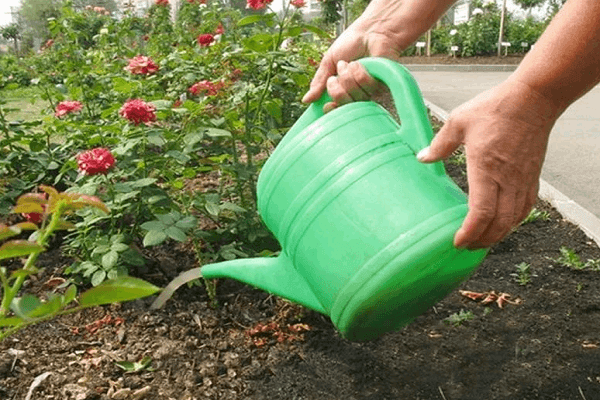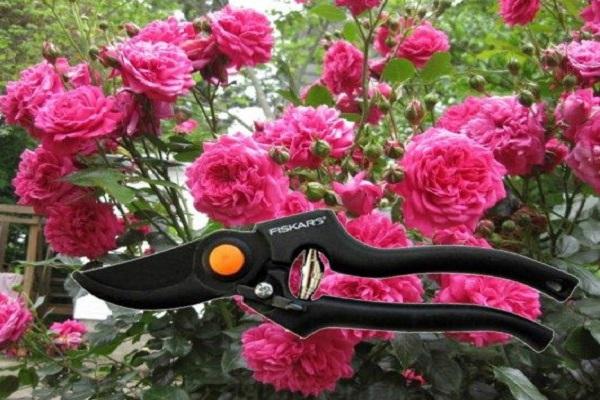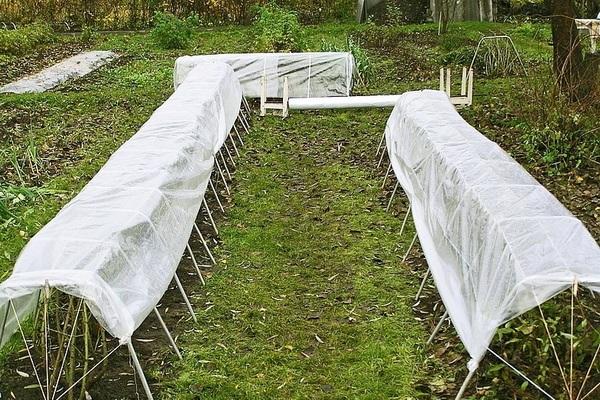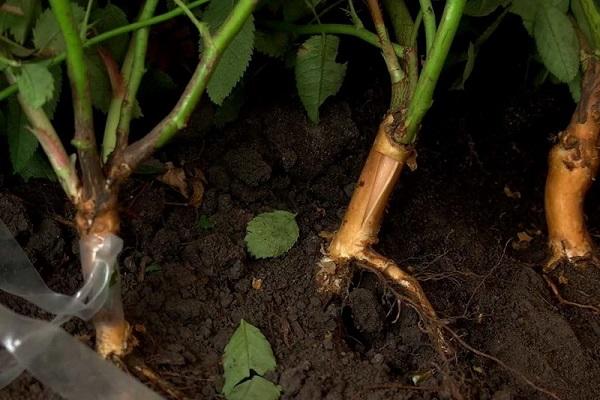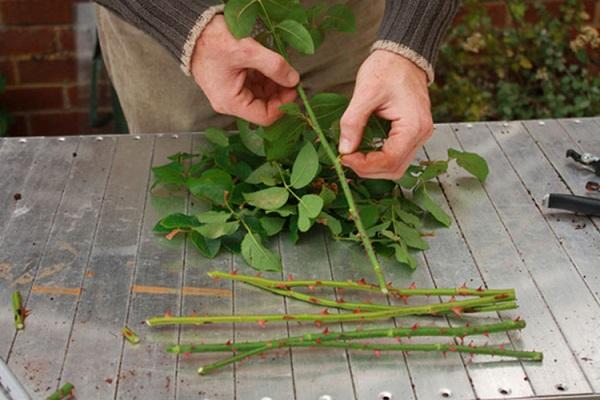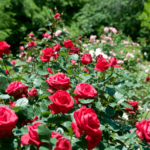Every year Russians buy rose seedlings. It is not always possible to preserve them for long-term flowering. Harsh climatic conditions: low winter temperatures, drought, strong winds have a devastating effect on beauties. Breeding Canadian roses will greatly help breeders preserve their numerous collections.
- Advantages of roses of Canadian selection
- The best varieties
- Quadra
- Felix Leclerc Rose
- Champlain
- Morden Blanche
- Henry Kelsey
- John Cabot
- How to land
- Choosing the right seedling
- Preparing the soil mixture
- Planting process
- Features of care
- Watering and fertilizing
- Pruning young bushes
- Sheltering roses for the winter
- Rose propagation
- Lateral layering
- Dividing the bush
- Cuttings
Advantages of roses of Canadian selection
The list of advantages of foreign hybrids is huge. Why are “Canadians” so in demand?
- The most important advantage of Canadian beauties is their resistance to low winter temperatures. They can be safely grown in Alaska, since at -45 degrees the root system remains viable. Some shoots that are located on top of the snow cover in winter freeze slightly, but during the growing season new branches quickly grow.
- Flowering continues from June until autumn frosts. An ordinary rose cannot boast of this fact.
- It is worth paying attention to the shape of the bush. Compactness, evenness, friendly budding - all this is inherent in Canadian roses. The color of the foliage goes very harmoniously with the different colors of the flowers.
- Feels good in the absence of light, can grow in shade or partial shade.
- Rose bushes are resistant to powdery mildew and black spot.
- Easy propagation and rapid survival during transplantation.
- It does not require winter shelter, but if this is provided, then in the summer you get a lush bush with an abundance of flowers.
Canadian roses are perfect for creating a flowering hedge; they will decorate any corner of the garden, without the risk of freezing or death from pests. When such a phenomenon occurs, they can be safely propagated and get new bushes that quickly gain strength.
The best varieties
All varieties of “Canadians” are divided into two large groups: park and climbing. Each group has its own varietal assortment. Park trees are more resistant to dry weather and require minimal maintenance. Designed for making borders or for growing alone. Bushes of such roses are usually powerful, large in diameter, and have a decent height. They can bloom twice a season; after the flowers, fruits appear that resemble large rose hips.
Climbing varieties of Canadian roses have vine-like shoots. They bend easily, so you can weave arches from them, decorate gazebos and make hedges. They have all kinds of colors. To preserve it in winter, simply lower it onto the ground along with a vertical support.
Quadra
A variety of climbing Canadian rose, reaching a height of 1.5-1.8 meters. The side shoots grow abundantly and become powerful. With such growth, the bush has a diameter of more than 1 meter. The shoots are long and flexible, so Quadra is used to decorate metal structures: garden arches, gazebos, street verandas.
There are few thorns on the stems, which makes the variety very popular, since working with it is a pleasure. The variety is attractive for its crimson, red flowers, collected in racemose inflorescences of several flowers, which makes it seem that the size of the roses is simply gigantic.
The individual flowers look like a densely packed rose with yellow stamens in the center. With abundant flowering, the stamens are not visible. Blooms from July to late autumn. The variety is frost-resistant, but requires cover with spruce branches. In spring, it quickly forms new shoots and gains strength.
Felix Leclerc Rose
The Canadian rose variety Leclerc Rose has won the love of many rose growers. In the inflorescence, the rose forms up to five flowers with a diameter of up to 10 centimeters. The color of the roses is pink, becoming more saturated, almost lilac, before flowering. Lianas up to 2.5 meters in size very easily tolerate low temperatures down to -30 degrees.
Very resistant to powdery mildew, practically not affected by the virus. Intended for cultivation in the central zone of Russia. It is better to plant in the fall, as it easily takes root and gains strength for wintering; it does not require shelter.The variety is drought-resistant; in cloudy weather and with excess moisture it is not affected by black spot.
Champlain
Rose Champlain - park variety. The bush attracts the eye with its beauty. Red buds, under which the greenery is practically invisible. The roses are bright red in color, with a yellow center when fully opened. Gorgeous brushes are formed from 5-7 large flowers, up to 7 centimeters in diameter.
The bush is compact, not spreading. In winter it tolerates frosts down to -30 degrees and does not require shelter. Yes, this is impossible, since the bush is simply huge. If the shoots freeze slightly in winter, they quickly recover in the spring. The variety does not require care. It is enough for him to provide free space.
Morden Blanche
Rose Morden Blanche is a very spectacular park variety. The flowers are double, with a pale pink edge of petals; in the center the color becomes brighter. It looks beautiful when not all the flowers have bloomed. Rose Morden has pale flowers and with them bright pink, almost lilac buds. The brushes contain 6 buds of different diameters.
The height of the bush reaches 75 centimeters, in the southern regions of the country - up to 2.5 meters. It tolerates severe frosts, but the above-ground part of the plant dies. With the arrival of spring, the bush grows again.
The disadvantage of this variety is that it becomes damaged by black spots due to excessive watering; some especially weak roses may become covered with powdery mildew.
Henry Kelsey
The variety of Canadian rose Henry Kelsey belongs to the park variety. Outwardly it resembles a rosehip blossom. Densely double flowers with a yellow center. The diameter of the flowers is 8 centimeters. Blooms twice per season. The rose is not fussy to grow, winter-hardy, and disease resistant. The rules of agricultural technology are available to everyone.
John Cabot
Rose John Cabot is from the Canadian climbing genus. Resistant to freezing and disease.The flowers are smaller than the previously presented varieties - up to 6 centimeters, 5-10 pieces per inflorescence. Dark red or crimson double flowers are located on vines up to 2.5 meters long.
How to land
Canadian rose bushes can be placed in any part of the garden, in combination with other bushes. To plant a plant, you need to choose the right seedling, the condition of which determines the further growth and flowering of the rose, and also prepare the soil.
Choosing the right seedling
The purchased seedling must be in excellent condition. Namely:
- the root must not be dried out:
- have a couple of healthy shoots;
- it is better to buy in separate containers with a closed root system;
- the existing leaves are green and not withered.
In general, it is better to purchase a healthy, strong seedling from trusted rose breeders or nurseries.
Preparing the soil mixture
The location can be any, but it is better to avoid the south side of the building and an area with a lot of sun, since the plant does not like direct rays, and on the south side of the house it may lose its roots. This happens due to the early melting of snow and then freezing of the soil.
The hole for the rose is made deep - up to 70 centimeters, the same dimensions are made in diameter. A bucket of organic fertilizers is poured into the bottom of the hole: humus, wood ash and peat. This feeding will be enough for the rooting of roses.
Planting process
Before planting in open ground, the long roots are cut off, and the same is done with the shoots. Their length must be at least 20 centimeters. The seedling is lowered into the hole, the roots are carefully straightened and sprinkled with earth. It is important that the root collar is not deepened into the soil. The soil around the seedling should be compacted with your feet, without touching the shoots.
The next step is to water thoroughly and add mulch. In this state, the roots will receive sufficient moisture.
Features of care
Canadian roses do not require care. It is enough for them to provide regular watering, weeding and bush formation. The rose will handle the rest on its own, and the amount of fertilizer you added during planting is enough for the first year of growing season.
Watering and fertilizing
Throughout the spring, roses are watered abundantly to provide a supply of moisture during the summer heat. In the summer, as the bush forms, budding and flowering, water as it dries out, avoiding waterlogging. It is important to wait until the soil is completely dry.
There is no need to water the plant in the fall, as this will cause new side shoots to appear on the rose, which will die anyway in the winter.
A complex of mineral fertilizers for Canadian roses is applied in the spring. It is enough to buy such a complex and do everything according to the instructions. In autumn, the area under the rose bush is mulched with rotted manure and the soil is lightly loosened.
Pruning young bushes
The main pruning is carried out in the spring. They cut out broken branches that died over the winter. In summer, shoots on which buds have not formed and lateral basal shoots are trimmed. This procedure will allow nutrients to pass to the flowering branches.
Pruning Canadian roses for the winter is carried out after flowering has ended. At this time, a dormant period begins, the sap moves slowly along the stems, the plant does not form side shoots. During this period, it is important not to water or feed the roses.
The shoots and three-year-old branches growing inwards are cut out. Do not prune completely, leaving a few buds so that next year new flower branches will grow from the pruning.The sections must be treated with garden varnish, brilliant green, or washed with potassium permanganate.
Sheltering roses for the winter
In regions where winter temperatures reach below -30 degrees, shelter is required. This is difficult to do for standard plants or park roses, whose crown is huge. Many gardeners build a special frame, which is covered with covering material. With the onset of spring, the cover is removed so that the rose does not rot.
Climbing roses are easier to cover. The vines are removed from the support, laid on the soil and covered with spruce branches; this will be enough to prevent the “Canadians” from freezing.
Rose propagation
Canadian roses are propagated in three ways: by lateral layering, dividing the bush and cuttings.
Lateral layering
The side branches bend to the ground. A hole is dug nearby and the middle part of the layering is placed in it. An incision is made in the peel in advance so that young roots will subsequently form. The branches are pinned with wire and covered with earth. Water regularly.
If roots have not formed before autumn, then the cuttings are covered for the winter. In the spring, before the buds open, the branch underground is carefully cut off with pruning shears, and the rooted layer is transplanted to a new location.
Dividing the bush
The procedure is carried out in the spring, before the buds open. The bush is dug up, the root system is divided into several parts with pruning shears. Each part must have at least 5 branches and roots. In this position, they are planted in a new hole.
Cuttings
Cuttings are cut in the fall. The cross-section of the shoot must be at least 1 centimeter. The cuttings are wrapped in peat or moss and plastic wrap. Store planting material in the refrigerator or dark, cool cellar.
In spring, you can take cuttings from shoots that formed last year.These will be green seedlings. Each cut should have at least two buds, and the length of the branch itself should be at least 10 centimeters.
Zelentsy can be immediately planted in the ground and regularly watered with a root formation stimulator. It is recommended to keep lignified cuttings in water until roots form. The water is changed periodically. Only after the root hairs appear are they planted in the ground. Rooted cuttings take root well.
Canadian roses are not inferior in sophistication to tea hybrids, although the latter are considered the most beautiful.
“Canadians” are unpretentious in care, do not freeze out in winter, and if they freeze out, they will quickly grow back and gain strength in the spring. Some of them bloom twice per season, and many do not require shelter for the winter.

